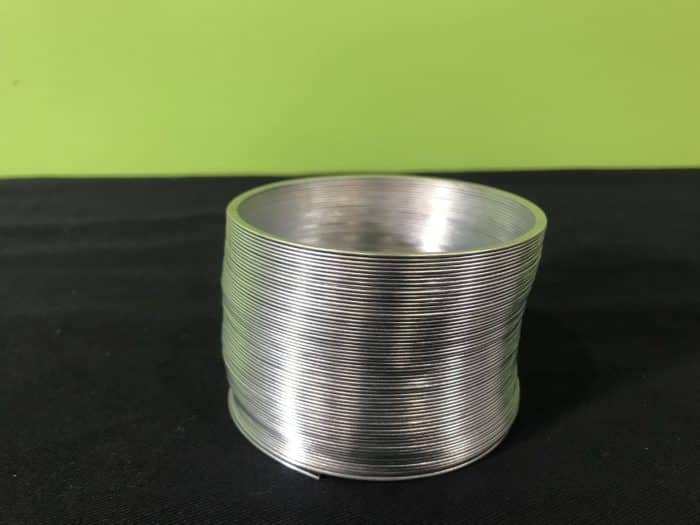
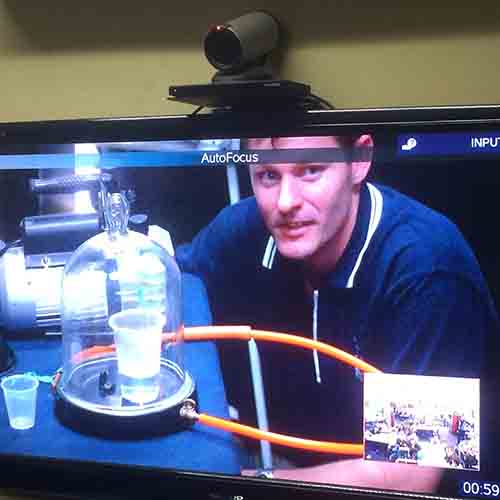
School science visits since 2004!
– Curriculum-linked & award-winning incursions.
– Over 40 primary & high school programs to choose from.
– Designed by experienced educators.
– Over 2 million students reached.
– Face to face incursions & online programs available.
– Early learning centre visits too!
Why Does This Happen?
Sound energy travels in waves along a material.
This material vibrates so that the energy can move from one place to another.
Look at the animation below:
Notice that the particles move up and down, but they don’t travel with the wave itself?
This illustrates the important point that most waves are an energy transfer, not a material transfer.
Think of people standing in a line and jumping up and down:
The people dont move with the wave, but they help to pass the wave along.
This type of wave is known as a transverse wave.
There are a number of waves that can be created by the slinky.
One of which is a standing wave.
Standing waves can be found in a tube that has been hit on a surface.
In this wave some of the slinky was moving rapidly and some locations were not moving at all.
The locations that were not moving are known as nodes.
The locations that move the most are known as antinodes.
Sound that radiates through the air (or liquids) travels in a more complex fashion.
The animation above represents a transverse wave where the material up and down only.
See below for another demonstration that represents sound travelling through air.
Try stretching the slinky between two people. One person now does short, sharp, pushing motions forwards with their slinky end toward the other person. You should see the spring send pulses of ‘contracted spring’ backwards and forwards throughout the slinky. This is more like how sound travels through air. Note that as the ‘contracted pulse’ moves backwards and forwards the slinky does the same movement, i.e. moving backwards and forwards locally as well. This represents kinetic (moving) energy being passed from air molecule to air molecule, allowing the sound to move through the air with small local disturbances in the air as the sound passes through the area. See below for an animation:
Look at the animation and pick a ‘particle’ to observe. This is called a longitudinal wave.
Think of when a deep, low, sound from a loud stereo or subwoofer ‘hits’ your chest. The local air surrounding your body pushes into you as the energy from the waves reaches you. Of course, this doesn’t mean that ALL of the air around the stereo moved to where you are standing 30 metres away, just that the energy propagating through the air disturbed that air locally around you. In essence, air (or liquid) is continually introduced and removed from the local area.
Check out the animation below from a single point source of sound, with the sound energy travelling radially around the sound source, similar to what happens with a boxed loudspeaker.
Variables to test
- Try a plastic slinky instead.
- How many standing waves can you form as you speed up shaking the slinky?
- What happens if you try a different type of spring?
- If you shake the slinky side to side, doe the waves still form?
From frequency & amplitude through to echoes & wave distortions, we’ve got your unit on sound covered!
Get in touch with FizzicsEd to find out how we can work with your class.
Light & Sound
Years 1 to 6
Maximum 30 students
Workshop or Show (NSW & VIC)
60 minute show or 90 minute workshop
Online Class Available
STEM Full Day Accelerator - Primary
Designed from real classroom experiences, this modular day helps you create consistently effective science learning that directly address the new curriculum with easily accessible and cost-effective materials.
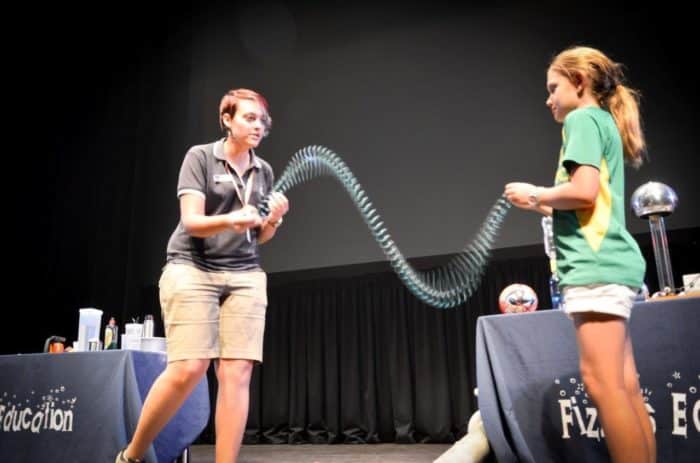


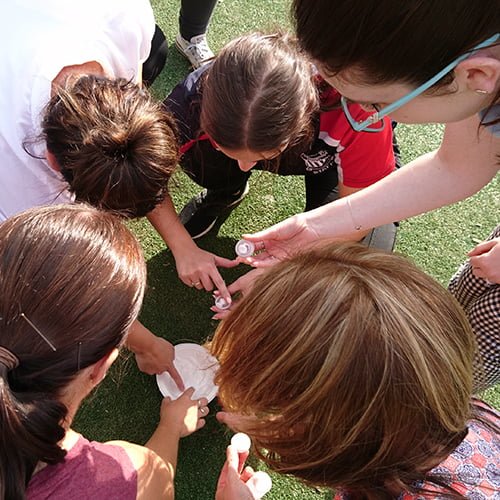
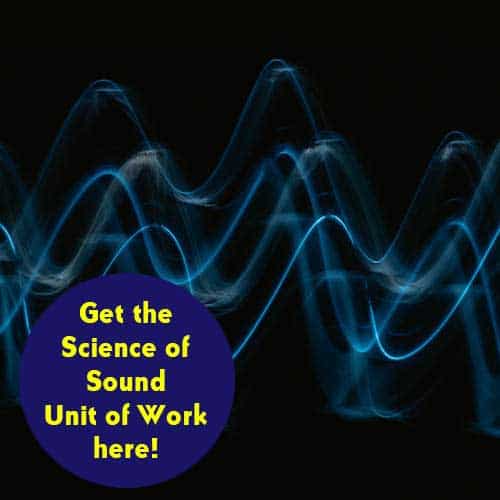


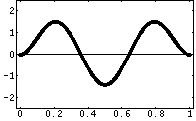

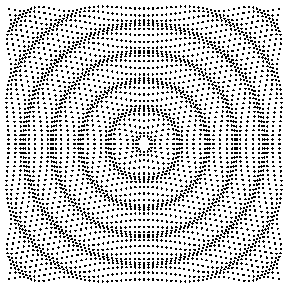


























Comments